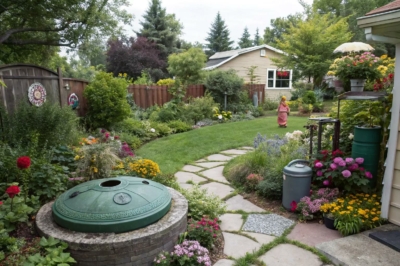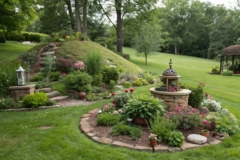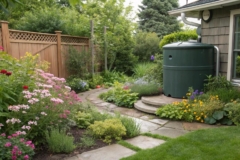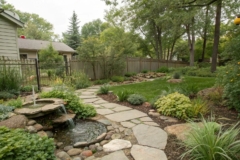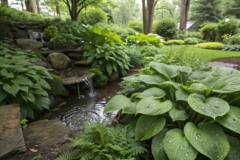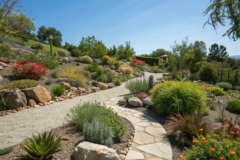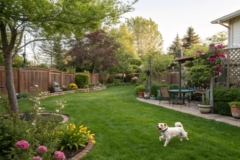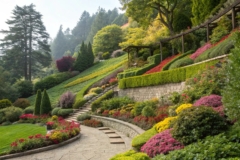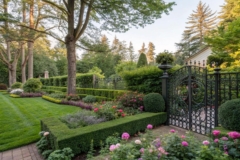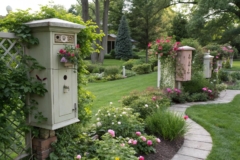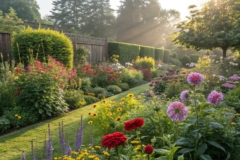1. Strategic Planting
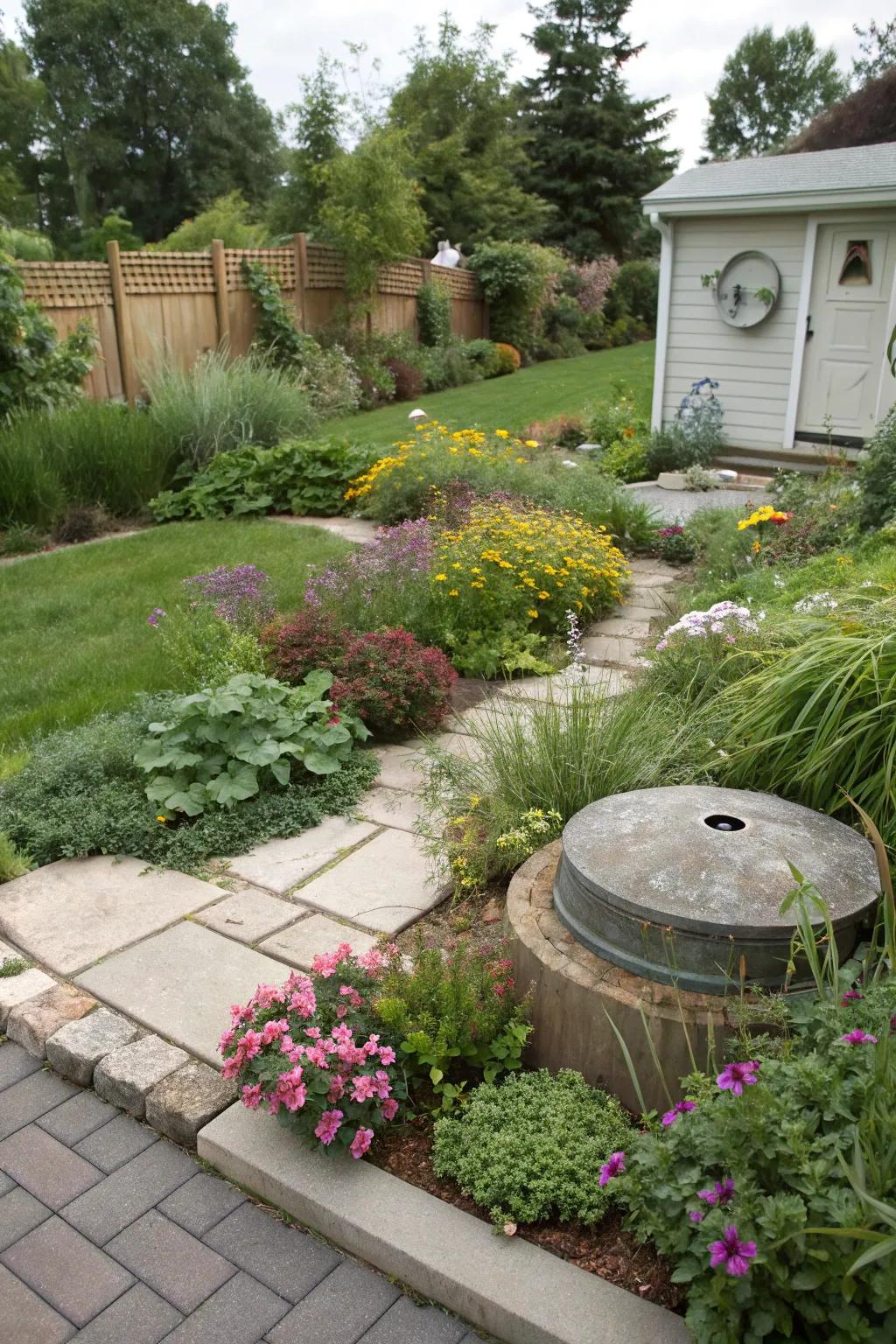
Choose small plants or ground covers that are safe for septic systems. I’ve had success with drought-resistant varieties that require minimal care.
Useful items to consider:
- Drought-Resistant Ground Cover Seeds: Transform your septic area with easy-to-grow ground cover that thrives with minimal care.
- Low-Maintenance Perennial Plants: Enhance your landscape with perennials perfect for septic areas, requiring little to no maintenance.
- Septic-Safe Shrubs: Add beauty with shrubs designed for septic areas, ensuring safety and style in your landscape.
2. Use Faux Rocks
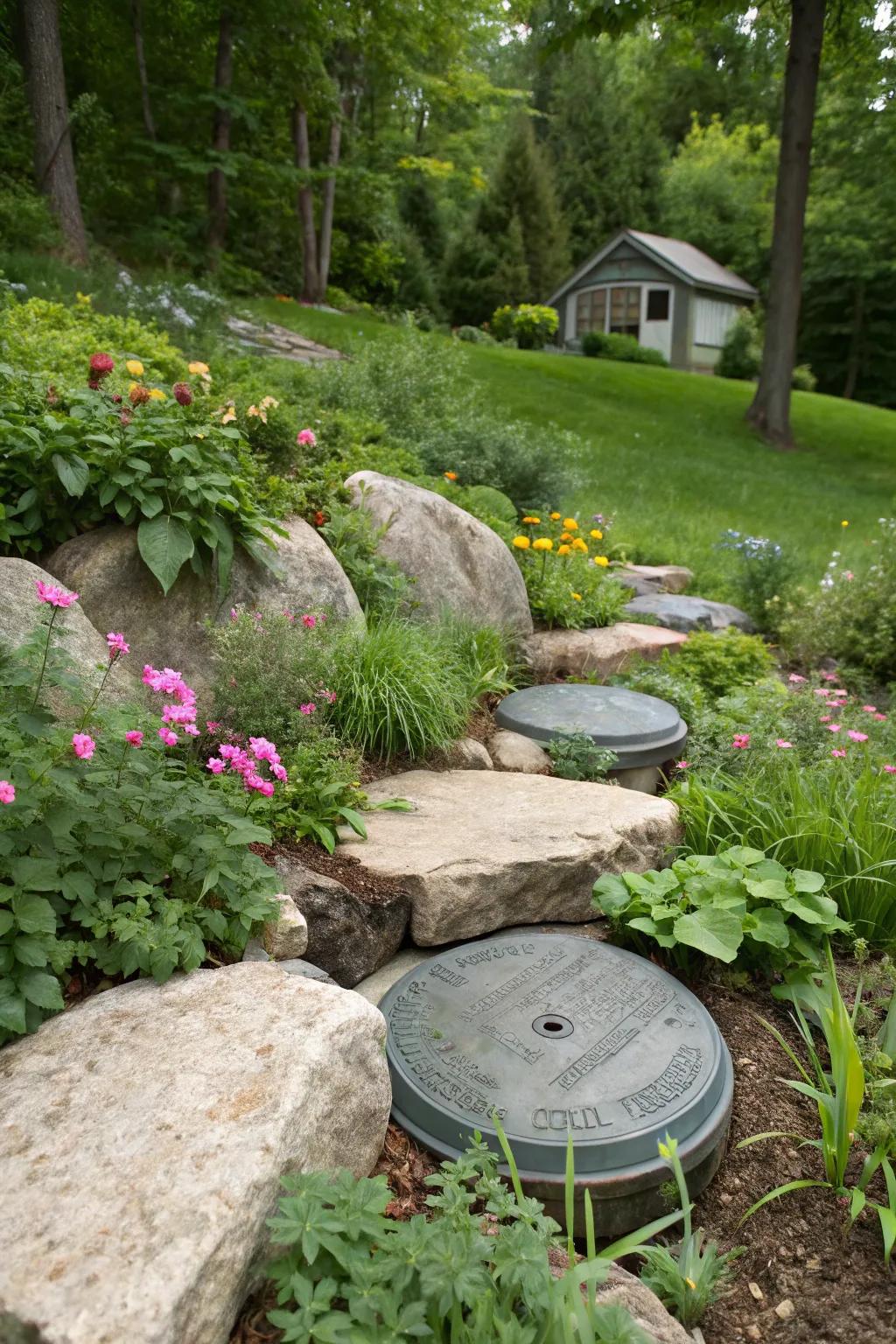
Place faux rocks over septic lids for a natural look without the weight. They are easy to remove when you need access.
A few things you might like:
- Lightweight Faux Rock Covers: Beautify your landscape while covering septic lids effortlessly and naturally. Easy to lift and maintain.
- Realistic Fake Rock Covers: Achieve a seamless natural look in your garden. Perfect for hiding septic lids with style.
- Decorative Garden Rock Enclosures: Enhance your garden aesthetics with these movable rock enclosures, ideal for septic lid coverage.
3. Camouflage with Grass Alternatives
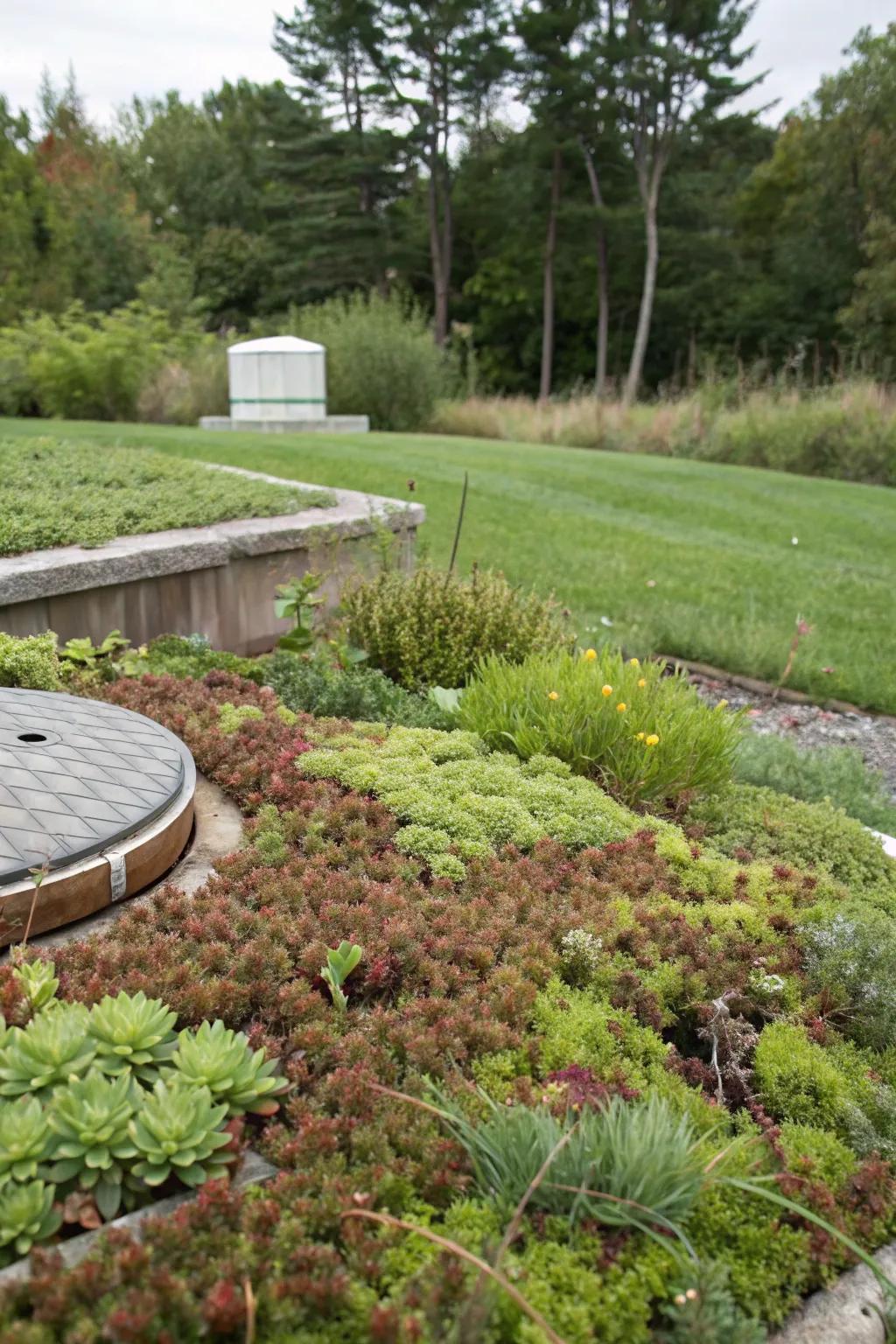
Explore grass alternatives like sedum to cover the septic area. They’re hardy and provide a unique texture to the garden.
Try these:
- Sedum Ground Cover Mix: Transform your septic area with a lush sedum mix for vibrant, hardy ground cover.
- Garden Fabric Weed Barrier: Protect and maintain your garden with a durable fabric weed barrier under your ground cover.
- Eco-Friendly Garden Fertilizer: Boost plant health naturally with eco-friendly fertilizer ideal for sedum and similar plants.
4. Create a Mosaic
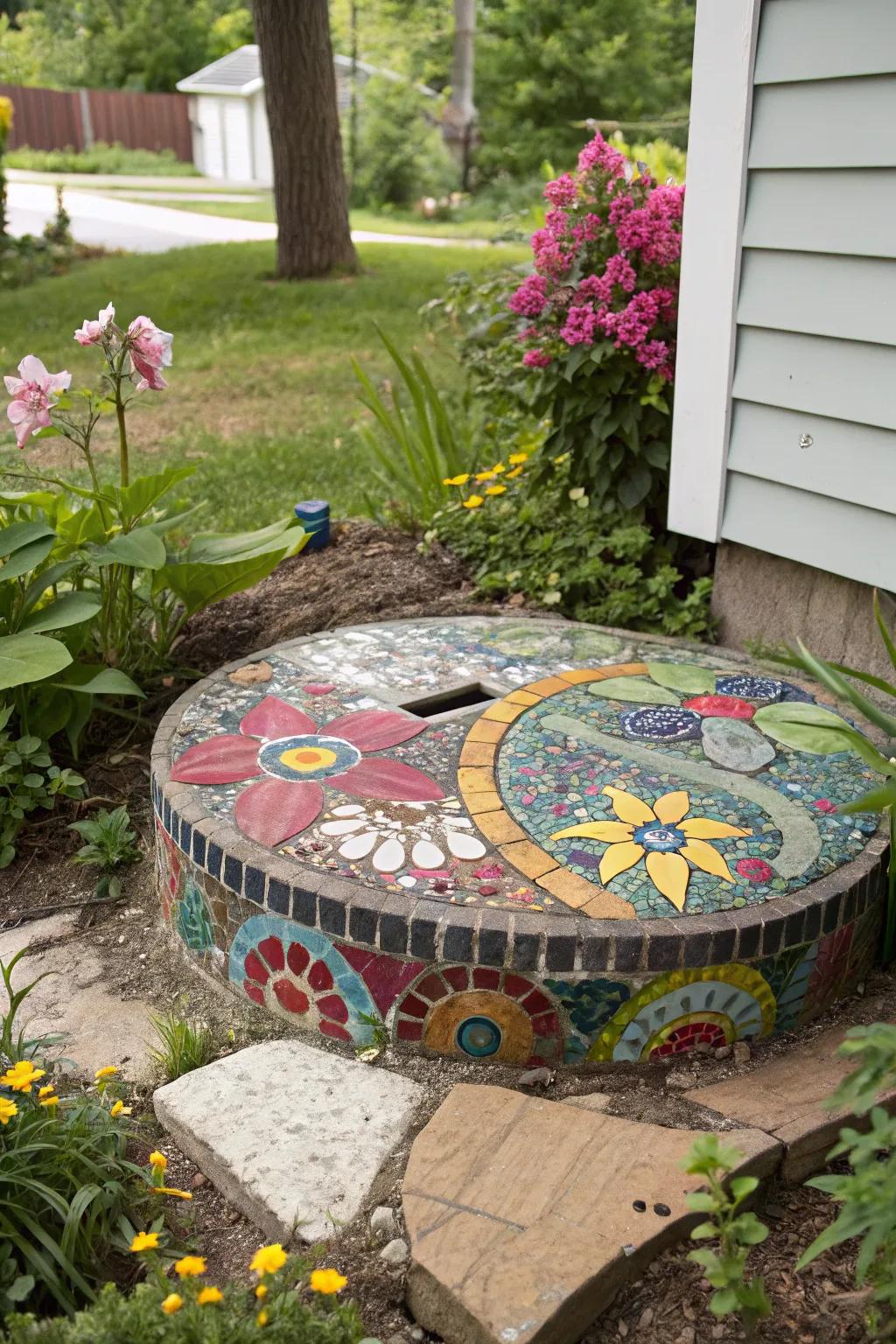
Turn tank covers into art with a mosaic design. It’s a creative way to blend functionality with personal flair.
A few suggestions:
- Mosaic Tile Kit: Transform your tank cover with vibrant mosaic tiles. Mix colors for a unique artistic statement.
- Outdoor Adhesive for Tiles: Secure your mosaic securely with weatherproof adhesive. Ensure longevity in any climate conditions.
- Grout Sealer for Outdoor: Protect your mosaic art with a durable grout sealer. Maintain its beauty through seasons.
5. Integrate Artful Lighting
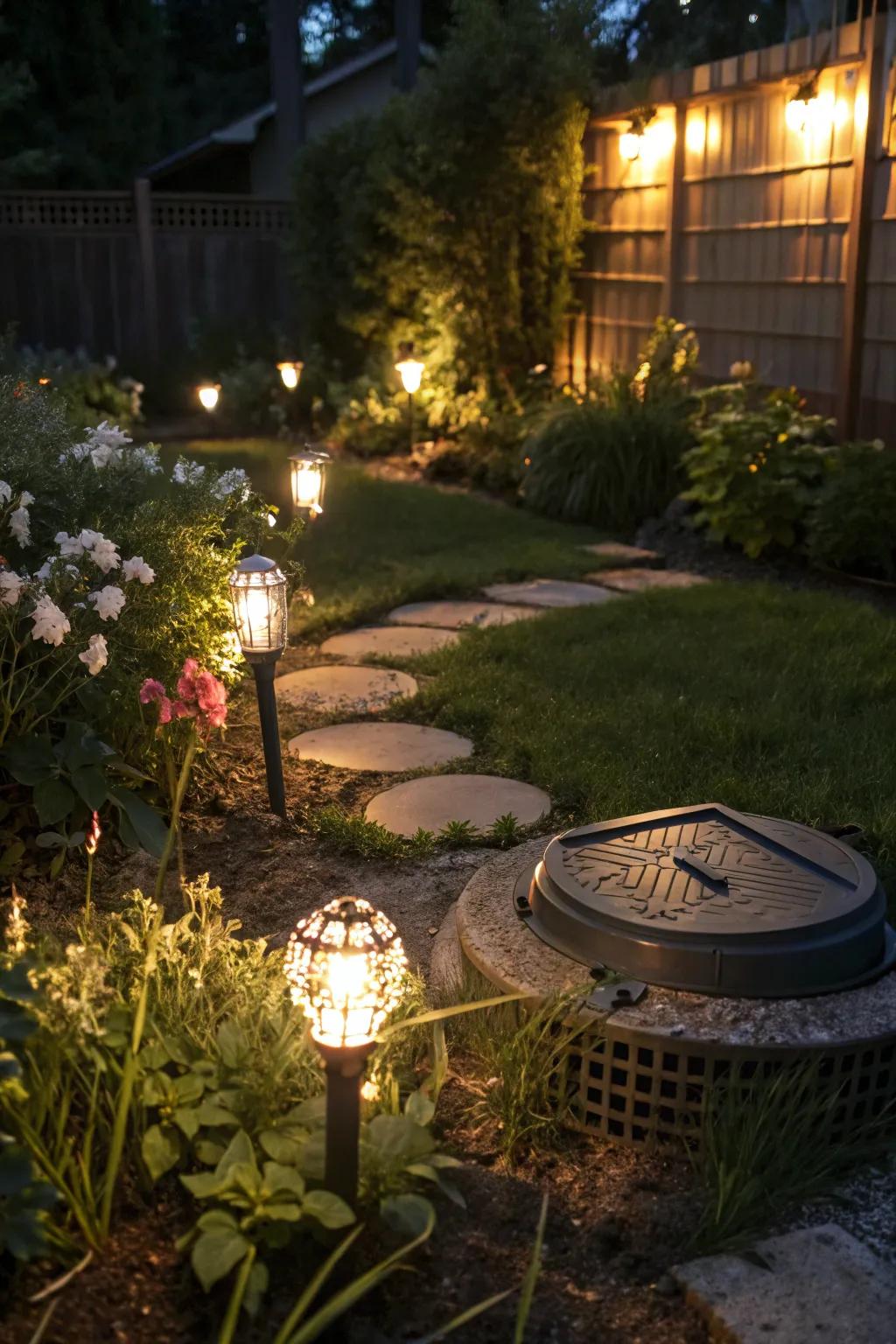
Incorporate artful lighting around the septic area for nighttime allure. Solar lights are a beautiful, eco-friendly choice I love.
These products might be useful:
- Solar Pathway Lights: Enhance garden charm with solar pathway lights. Embrace eco-friendly outdoor elegance effortlessly.
- LED Garden Spotlights: Add dramatic flair with LED garden spotlights. Illuminate your landscape beautifully at night.
- Decorative Solar Lanterns: Brighten pathways with decorative solar lanterns and create enchanting outdoor spaces easily.
6. Floral Focus
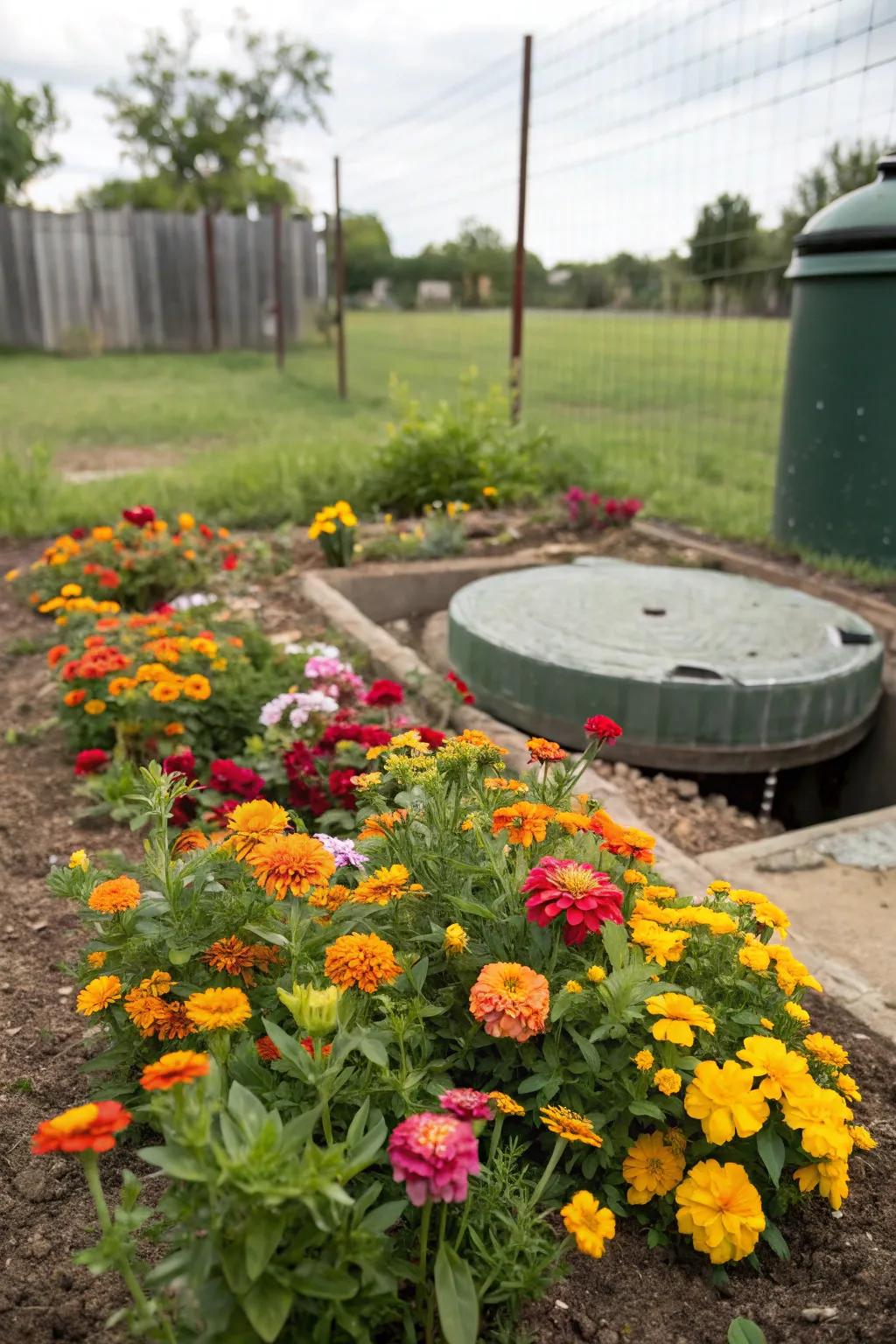
A flower bed around the septic area can draw attention away from the tank itself. I love planting colorful blooms that shift focus to their vibrant beauty.
Check if these fit your needs:
- Perennial Flower Seed Mix: Enhance your garden with colorful blooms that divert attention from any unsightly spots.
- Decorative Garden Edging: Install elegant edging to define flower beds and add charm to your landscape design.
- Compact Garden Shovel: Easily plant flowers with this durable, ergonomic shovel ideal for garden beds.
7. Install a Decorative Fence

A decorative fence can frame the septic area, adding privacy and style. Just make sure it’s lightweight and easily removable.
Possibly handy products:
- Lightweight Decorative Garden Fence Panels: Enhance your garden with removable, stylish fence panels for added privacy and charm.
- Weather-Resistant Vinyl Fence Panels: Add elegance and durability to your space with weather-resistant, easy-to-install fence panels.
- Portable Picket Fence Sections: Frame your septic area beautifully with lightweight, portable picket fence sections.
8. Natural Borders
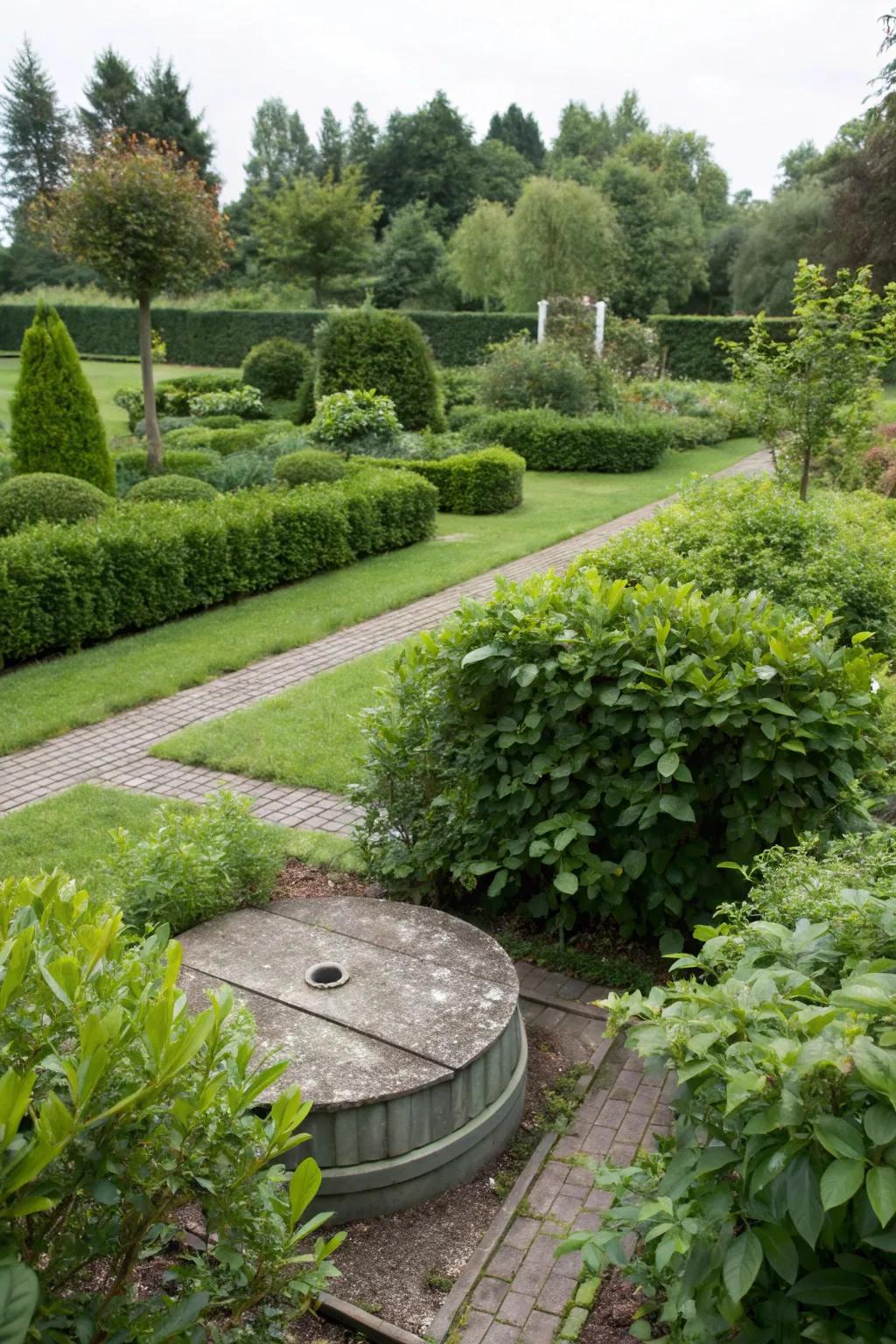
Plant shrubs with non-invasive roots around the septic area to create a natural border. Be sure to keep them at a safe distance from the system.
Items that may come in handy:
- Shrubs with Non-Invasive Roots: Enhance your landscape with beautiful shrubs. Perfect for creating natural, septic-safe borders.
- Landscape Edging Roll: Define your garden with flexible edging; easy to install and perfect for curved designs.
- Mulch for Landscaping: Protect your plant roots and retain soil moisture with premium mulch, ideal for any garden.
9. Artful Arrangements
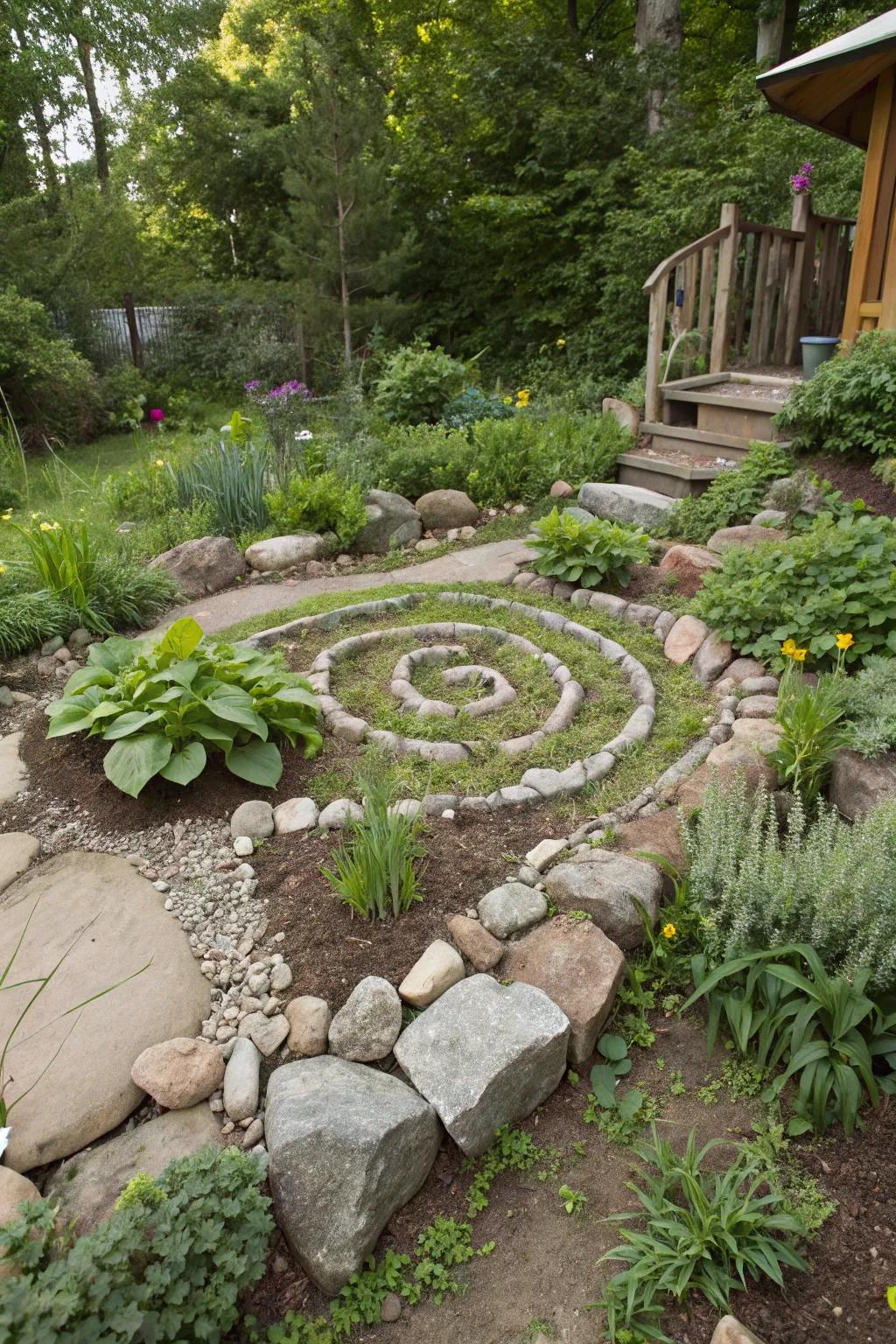
Create an artful design by arranging plants and rocks in patterns. I enjoy experimenting with spirals or waves to draw attention away from the tank.
Might be a good match:
- Decorative Garden Rocks: Enhance visual appeal with decorative garden rocks, creating stunning patterns around your septic tank area.
- Spiral Plant Supports: Guide plant growth and design with spiral plant supports for a captivating landscape element.
- Outdoor Pathway Lights: Illuminate your garden artfully using outdoor pathway lights to highlight design patterns at night.
10. Create a Charming Pathway

A stone or gravel pathway can lead the eye away from the septic tank while providing a practical route for maintenance access. I’ve found that it adds a rustic charm to the garden and is easy to install without disturbing the tank.
Explore these options:
- Decorative Garden Stones: Enhance your garden with decorative stones for a natural and appealing pathway. Easy to install.
- Gravel for Landscaping: Create a rustic path with gravel, providing easy access and charming aesthetics. Perfect for gardens.
- Garden Pathway Edging: Define your stone path with durable edging, ensuring clean lines and long-lasting structure.
11. Garden Gnomes Galore
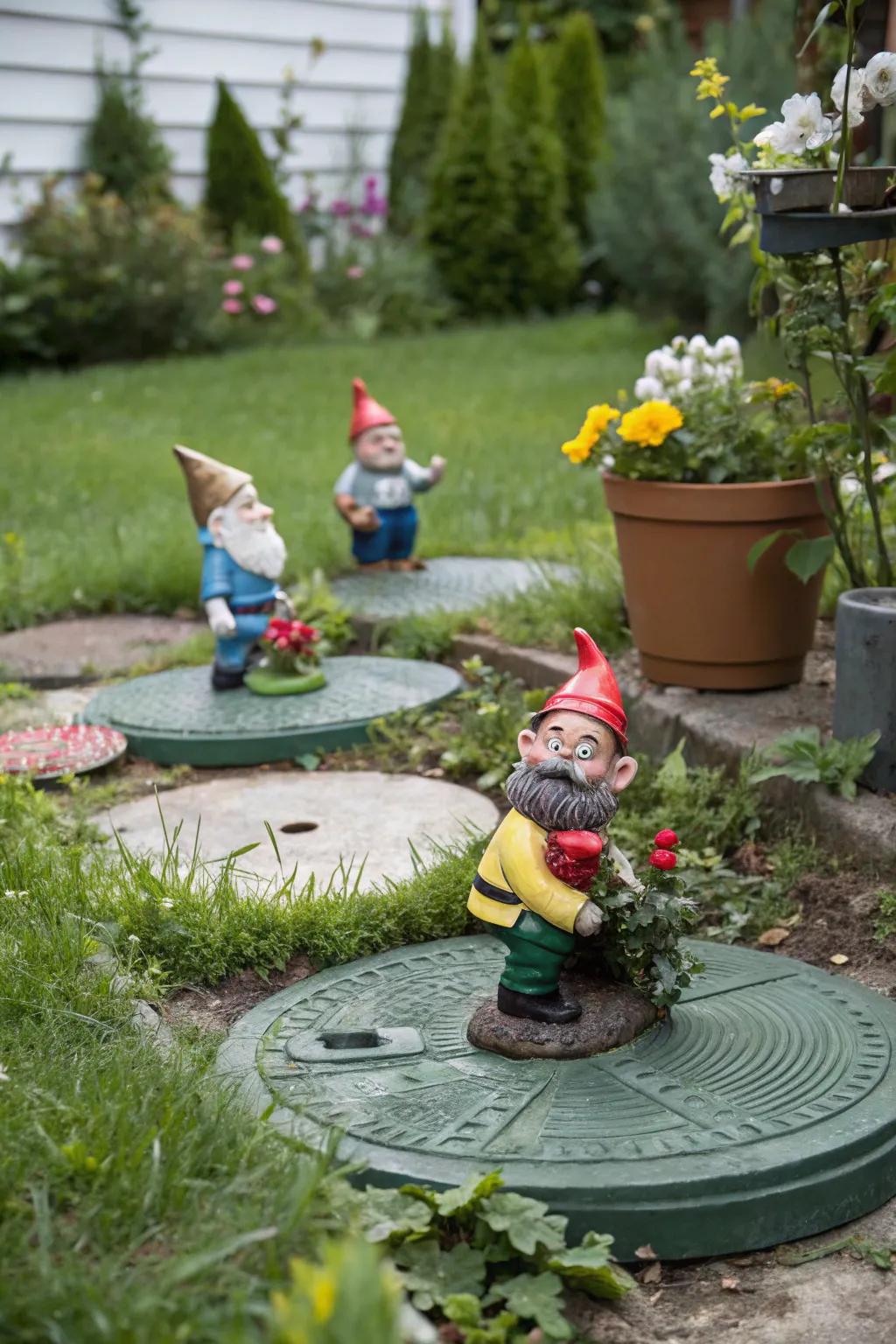
Use playful garden gnomes to add character and cover lid areas. They’re a fun addition that’s easy to move when needed.
May just do the trick:
- Colorful Garden Gnomes Set: Add charm to your garden with these playful, colorful gnomes. A delightful touch for any yard.
- Solar-Powered Garden Gnome: Light up your garden with this solar-powered gnome. A whimsical addition to brighten evenings.
- Whimsical Gnome Figurines: Bring laughter to your garden with these whimsical gnomes. Perfect for covering unsightly areas.
12. Eco-Friendly Ground Cover
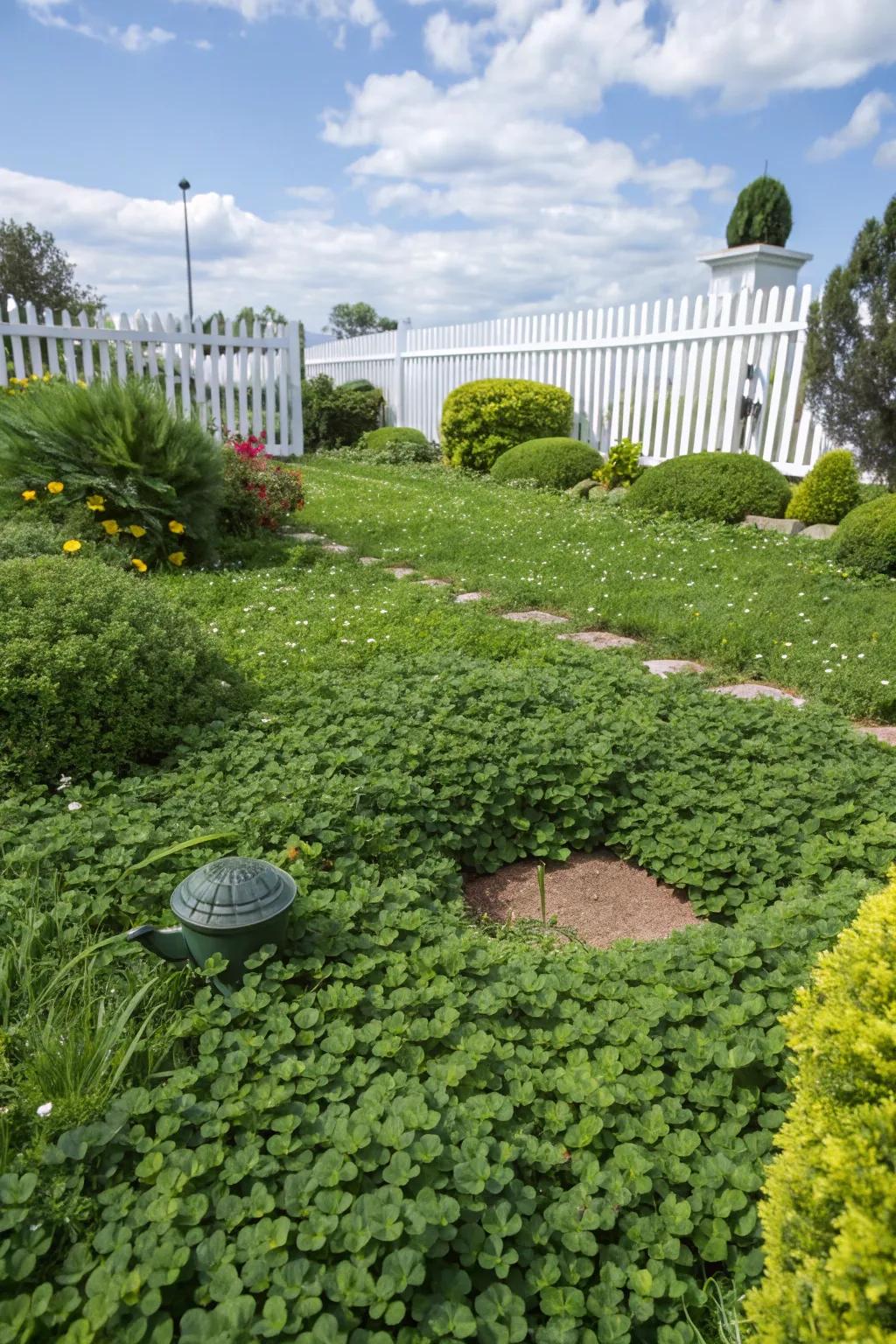
Choose eco-friendly ground covers like clover that are septic-safe. They’re perfect for a sustainable, low-maintenance garden.
You might give these a try:
- Clover Seed Mix: Enhance your garden with easy-to-grow clover seed mix for lush and eco-friendly coverage.
- Organic Lawn Fertilizer: Nourish your ground cover with organic fertilizer, ensuring healthy growth and vibrant greenery.
- Gardening Mulch: Apply natural mulch to maintain moisture and protect your eco-friendly ground cover effortlessly.
13. Raise the Bed

Try using raised beds or planters to disguise the septic tank area. In my garden, I’ve used them to grow herbs and flowers, making the space functional and beautiful.
You might like:
- Wooden Raised Garden Bed Kit: Elevate your garden with this wooden bed kit, perfect for herbs and flowers in any space.
- Herb Planter Box with Liner: Grow fresh herbs effortlessly with this planter box, ideal for both novice and expert gardeners.
- Outdoor Planter with Trellis: Add vertical interest with this trellis planter, perfect for climbing plants and space-saving gardens.
14. Go Green with Grass
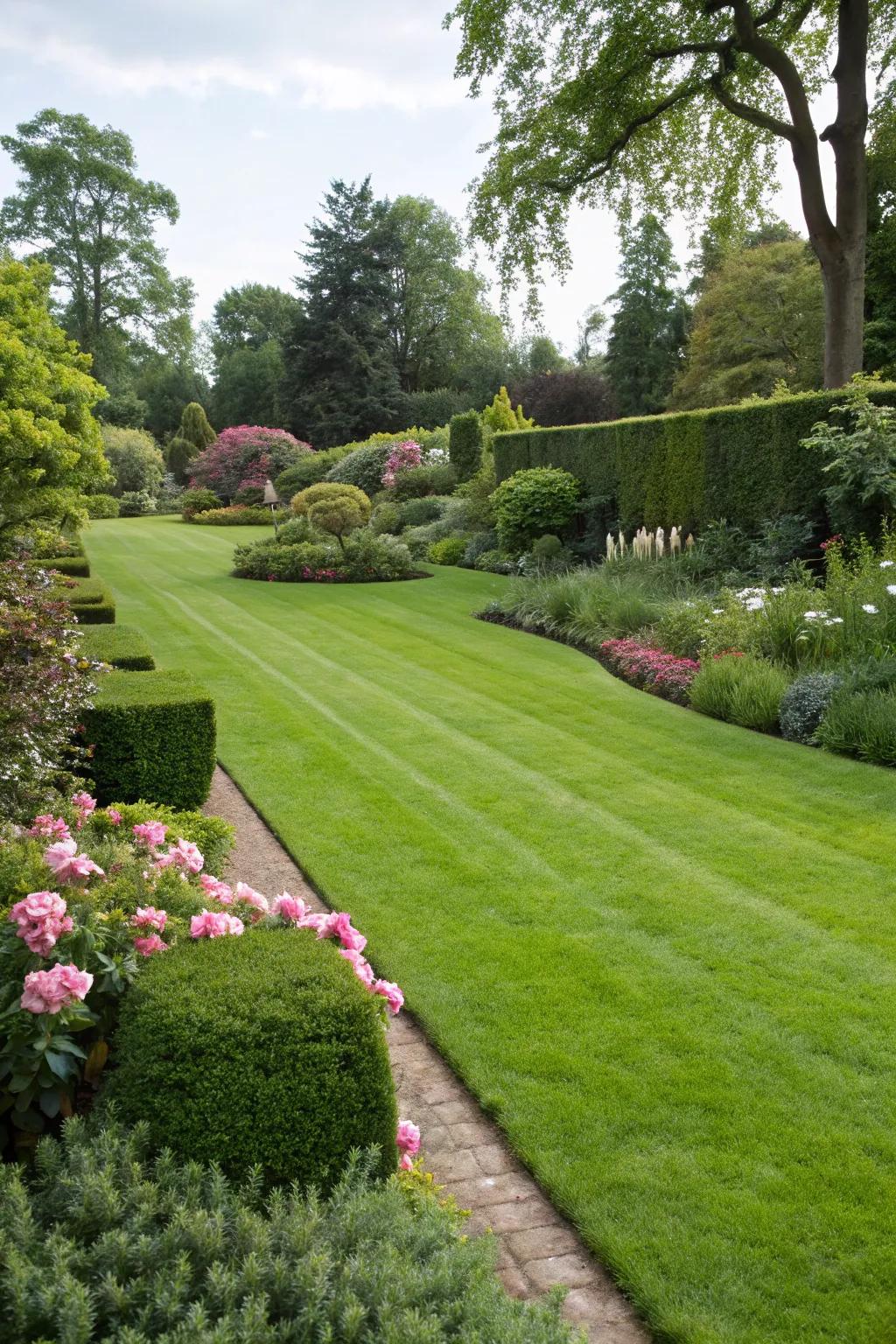
Opt for a lush, green lawn that integrates seamlessly with the septic area. In my experience, choosing a hardy, low-maintenance grass keeps the area looking pristine.
Possibly helpful picks:
- Low-Maintenance Grass Seed Mix: Enhance your lawn with durable grass seed, perfect for a lush and resilient landscape.
- Eco-Friendly Lawn Fertilizer: Boost your lawn’s health with an eco-friendly fertilizer for vibrant and sustainable greenery.
- Automatic Lawn Sprinkler System: Keep your lawn thriving effortlessly with an easy-to-use automatic sprinkler system.
15. Create a Focal Point
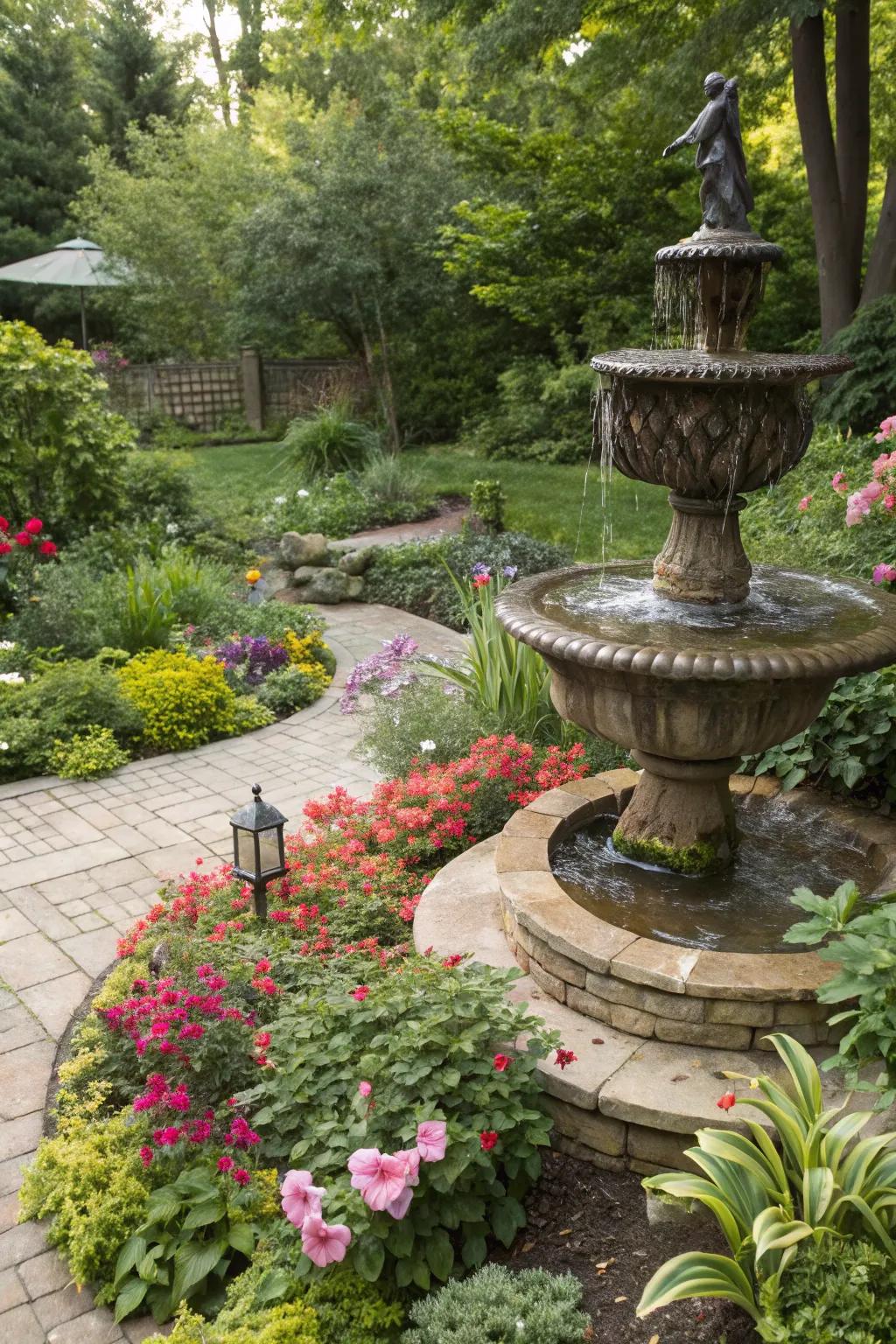
Design a focal point like a sculpture or water feature to distract from the septic area. It becomes a garden highlight rather than a distraction.
A few helpful options:
- Outdoor Garden Sculpture: Enhance your garden’s charm with an elegant sculpture as a captivating centerpiece focal point.
- Tiered Water Fountain: Install a tiered water fountain to add soothing sounds and visual interest to your garden.
- Decorative Garden Lantern: Illuminate your garden beautifully with an elegant lantern, creating a welcoming evening atmosphere.
16. Plant a Meadow

Consider a wildflower meadow for a low-maintenance, colorful cover. It’s a vibrant way to integrate the septic area into the landscape.
Some handy options:
- Wildflower Seed Mix: Transform your space with a colorful wildflower seed mix for a stunning, natural look.
- Garden Soil Enhancer: Boost your meadow’s growth with a quality garden soil enhancer, ensuring vibrant blooms.
- Pollinator Attractant: Attract beneficial pollinators effortlessly with this natural pollinator attractant spray.
17. Rocky Elegance
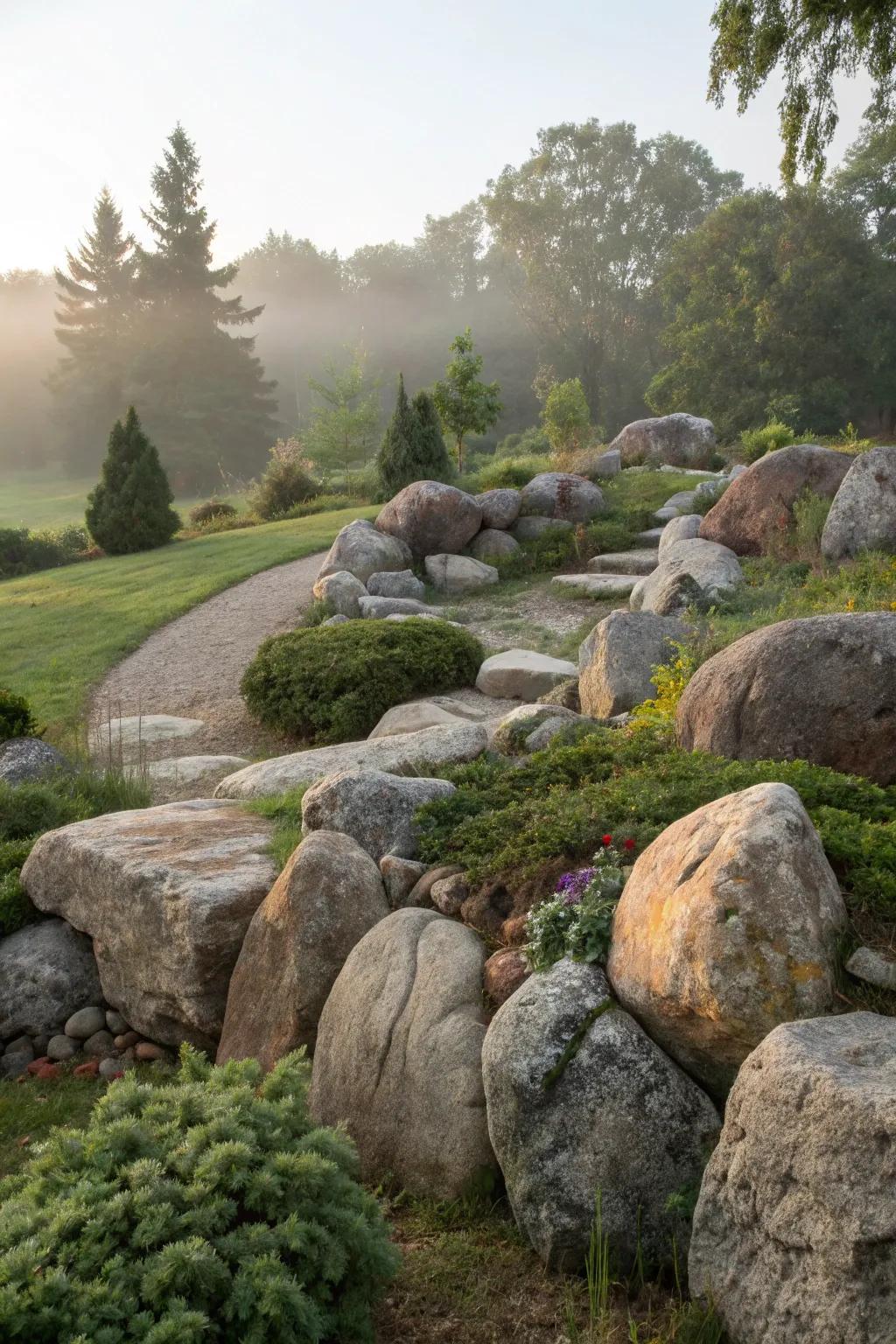
Decorative rocks and boulders can be artfully placed to cover septic tank lids. I used lightweight faux rocks that can be easily moved when access is needed.
Some ideas to consider:
- Lightweight Faux Landscape Rock: Enhance your garden’s elegance with movable faux rocks, perfect for easy septic tank access.
- Decorative Garden Boulders: Create a natural landscape look with decorative boulders that blend seamlessly into your garden.
- Artificial Landscaping Stones: Transform your outdoor space with realistic artificial stones, offering style and functionality.
18. Install Stepping Stones
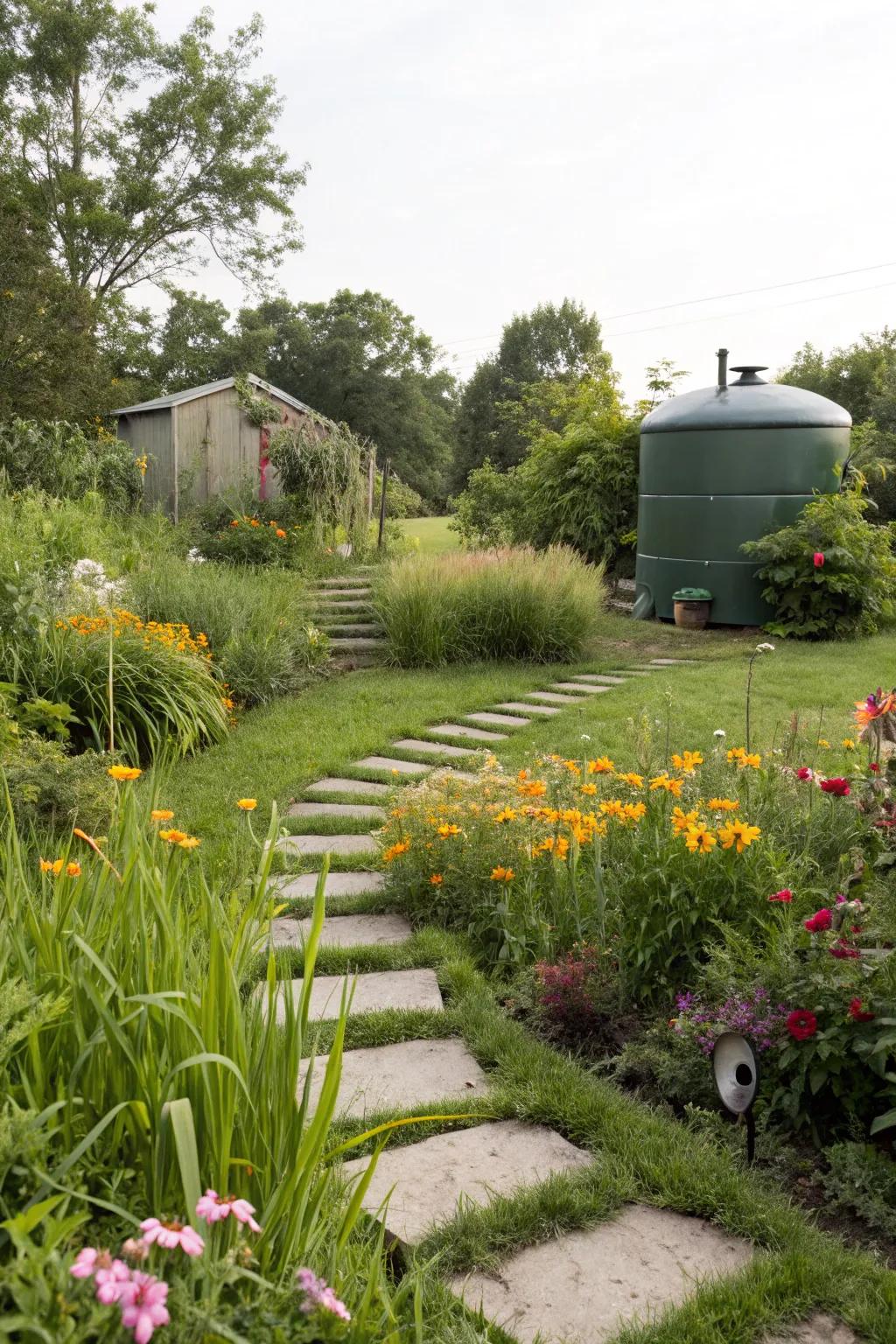
Lay down stepping stones over the septic area for both access and aesthetics. I’ve used them to create a whimsical path through my garden.
Maybe worth checking out:
- Concrete Stepping Stones: Enhance your garden with durable concrete stepping stones for a whimsical, practical path.
- Decorative Pathway Lights: Illuminate your stepping stone path at night with stylish solar-powered pathway lights.
- Garden Edging Border: Define your path with garden edging for a neat, organized landscape design.
19. Hide with Decor
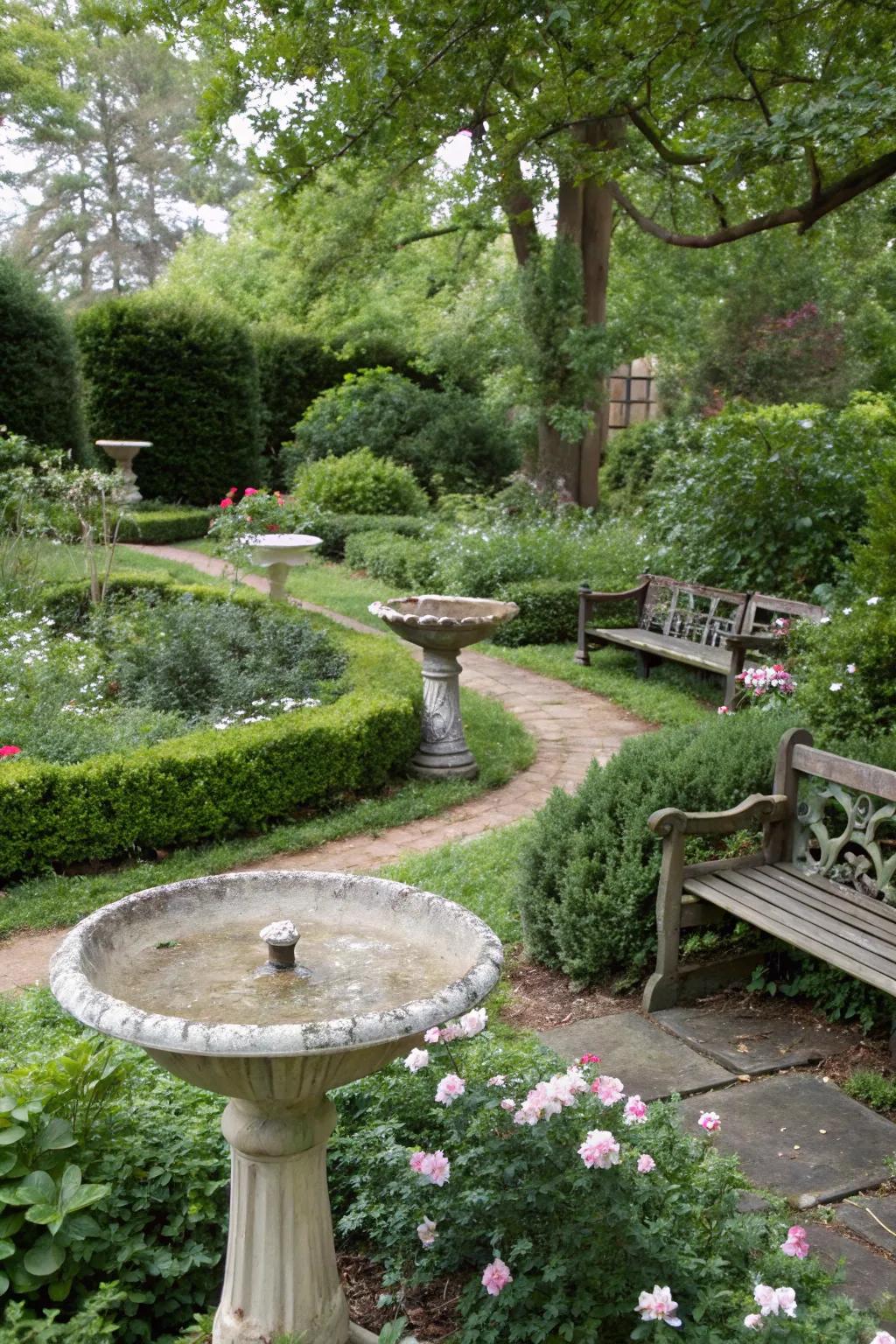
Use garden decorations like bird baths or benches to cover unsightly lids. Lightweight and movable, they make maintenance a breeze.
A few choices to try:
- Decorative Bird Bath: Enhance your garden’s charm while hiding lids effortlessly with a stylish bird bath.
- Garden Bench Seat: Add elegance to your space and conceal eyesores using a versatile garden bench.
- Stone Finish Garden Statue: Camouflage septic tank lids beautifully with a stone-finished garden statue.
20. Decorative Vent Covers

Cover unsightly vent pipes with ornamental covers. I’ve found ones that double as birdhouses, adding a whimsical touch.
Products that could assist:
- Ornamental Birdhouse Vent Cover: Enhance your garden with a charming birdhouse vent cover, blending utility with whimsical appeal.
- Decorative Garden Vent Pipe Cover: Transform unsightly pipes with stylish covers, adding a touch of elegance to your landscape.
- Artistic Vent Pipe Birdhouse: Add flair to your garden with an artistic vent cover that doubles as a birdhouse.
